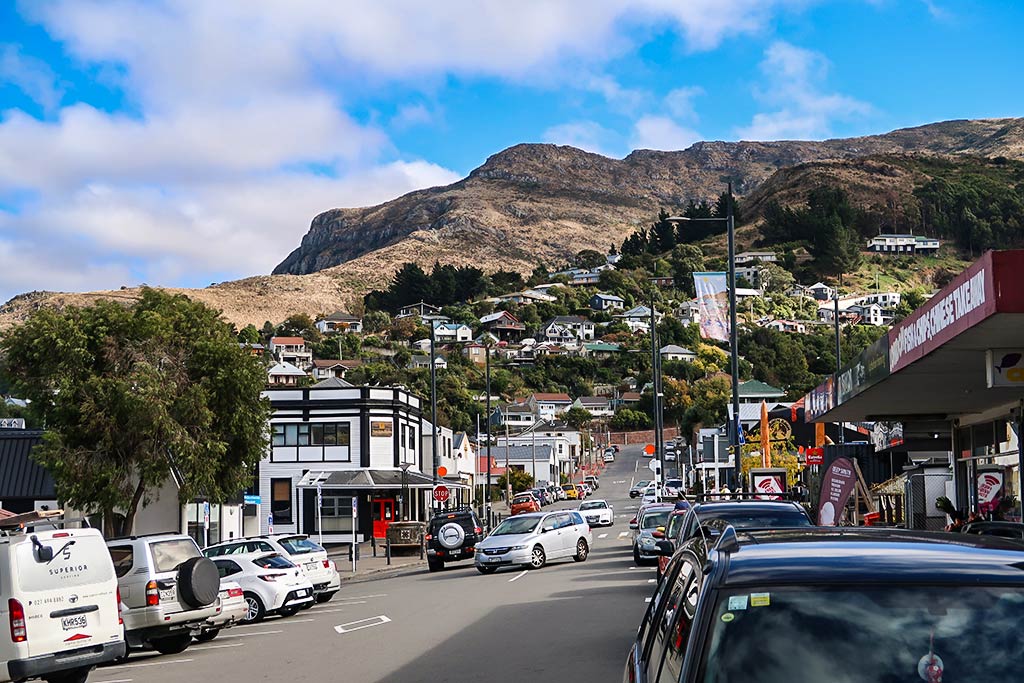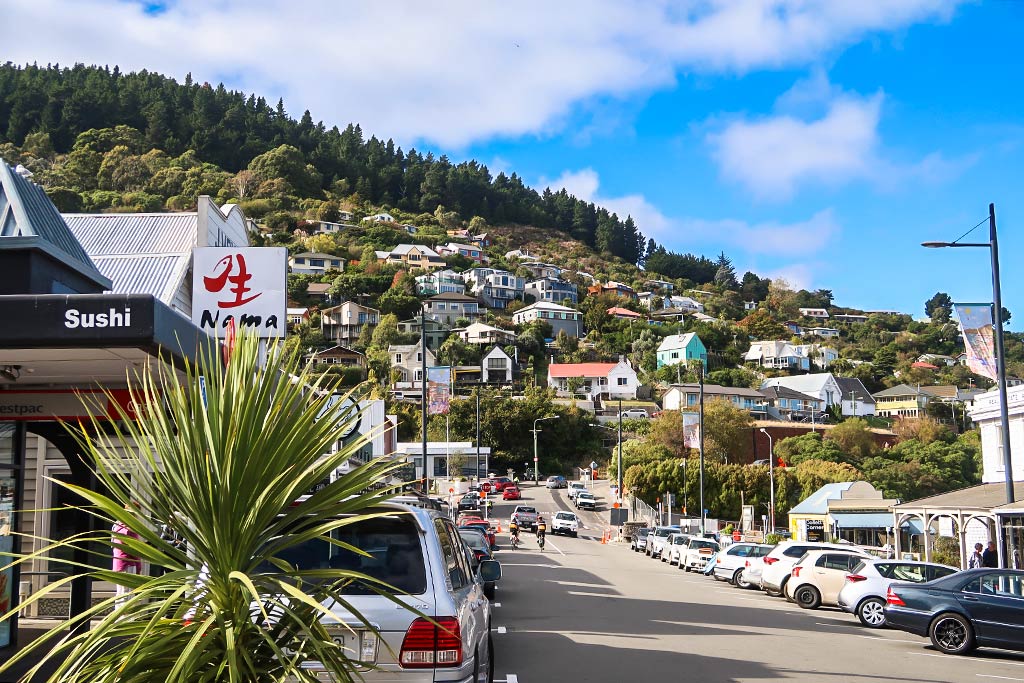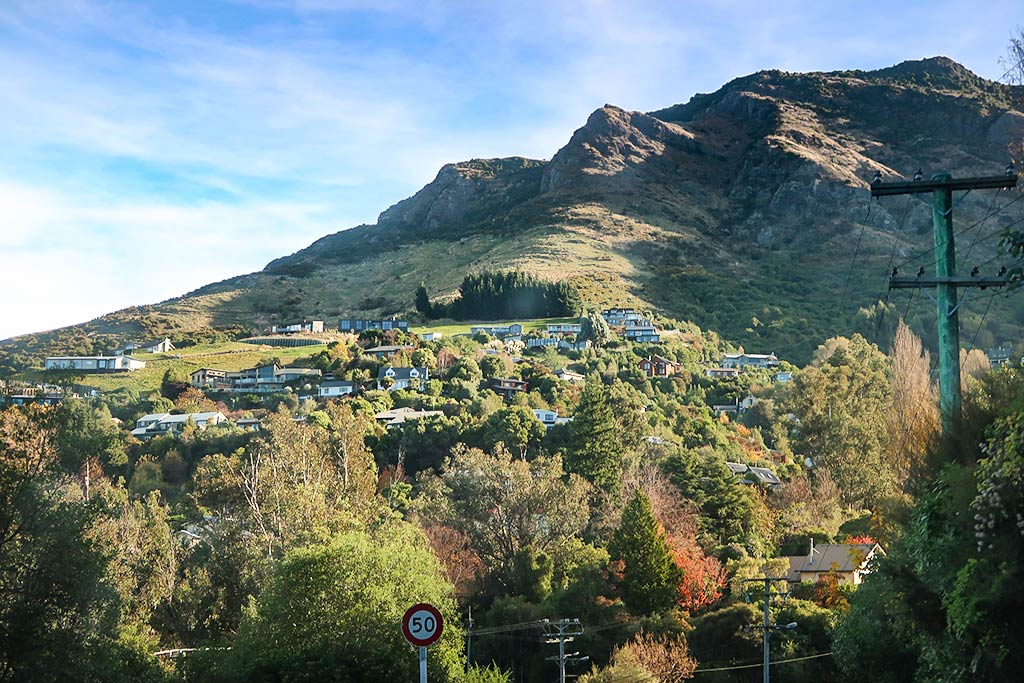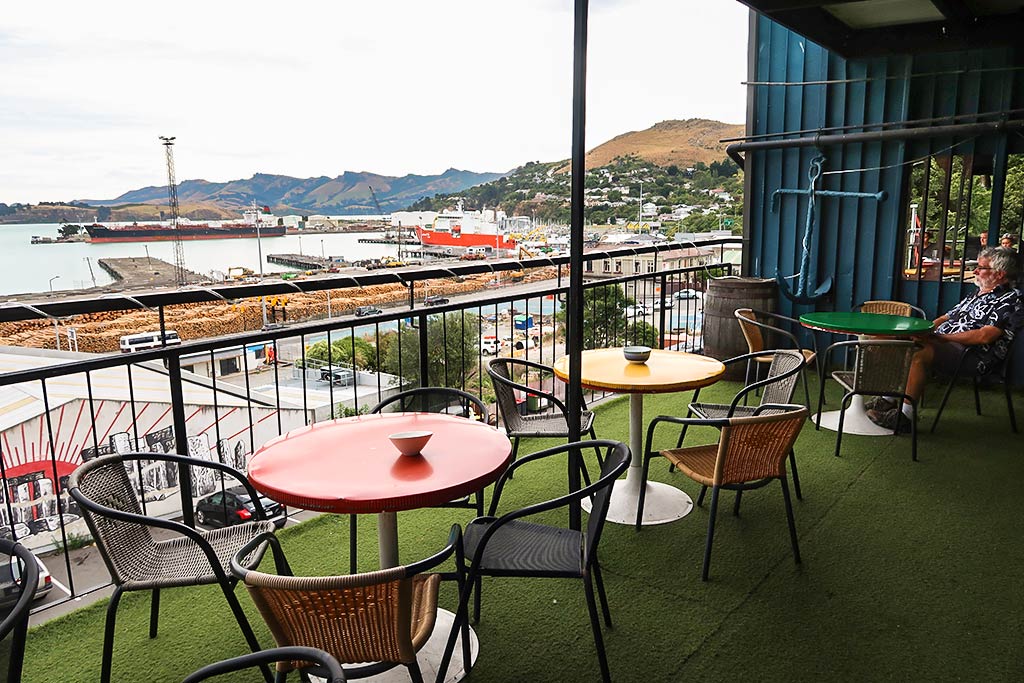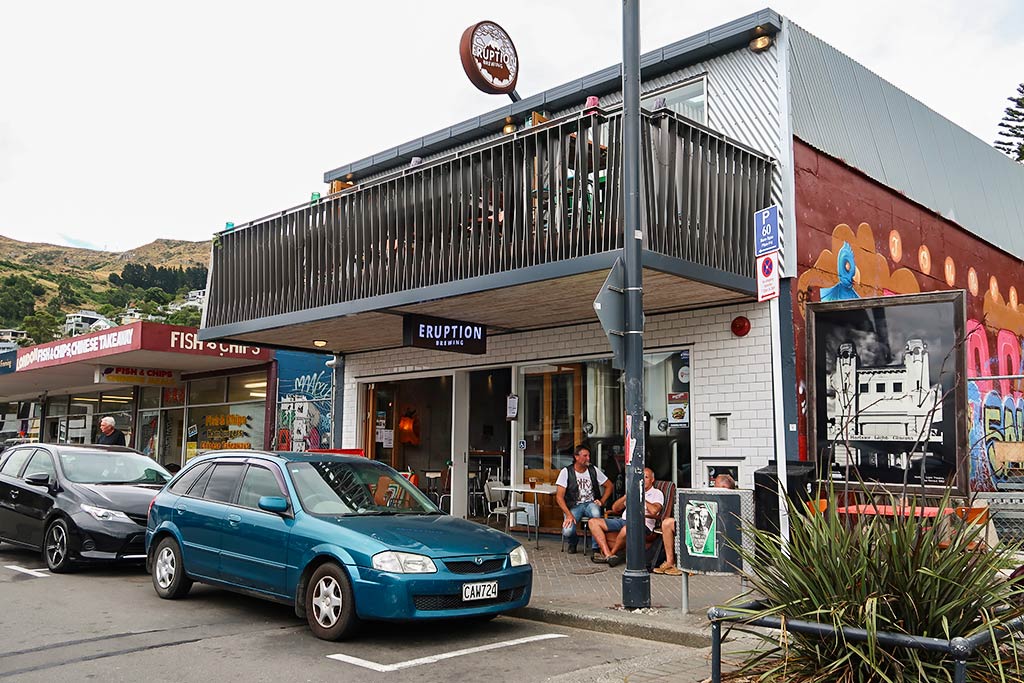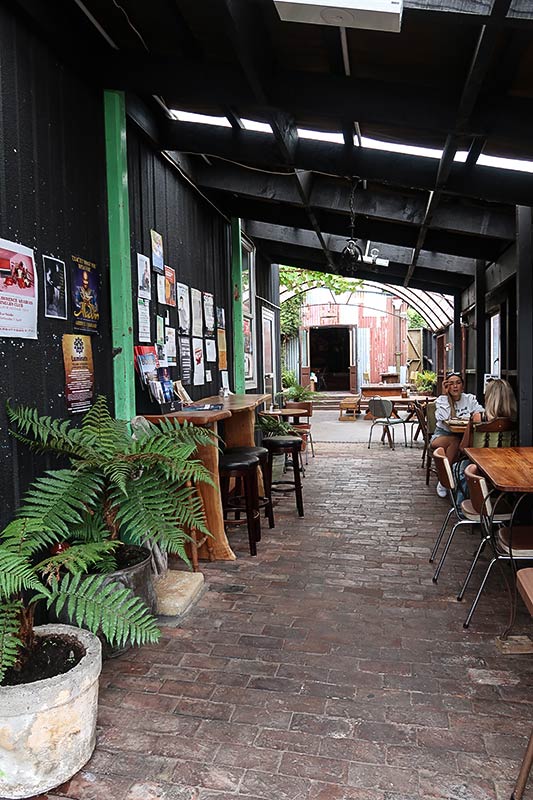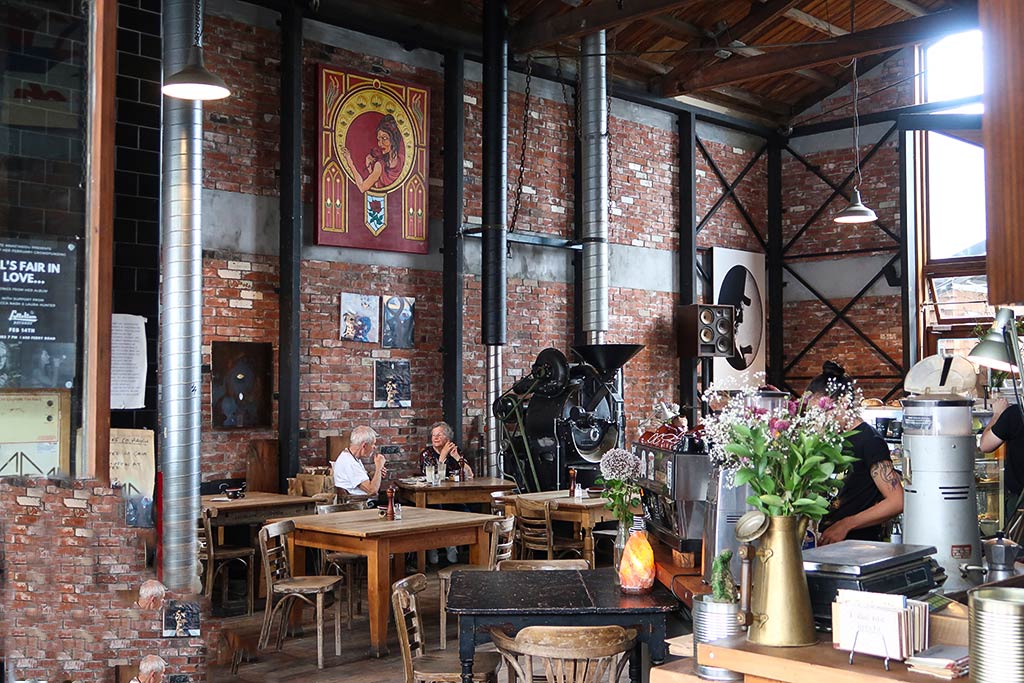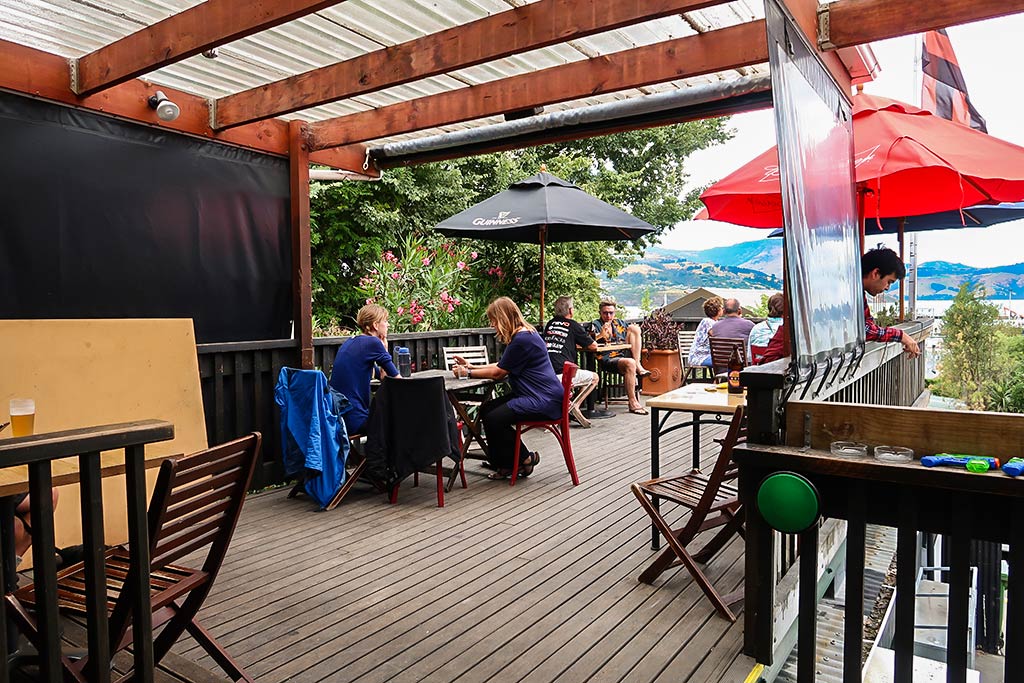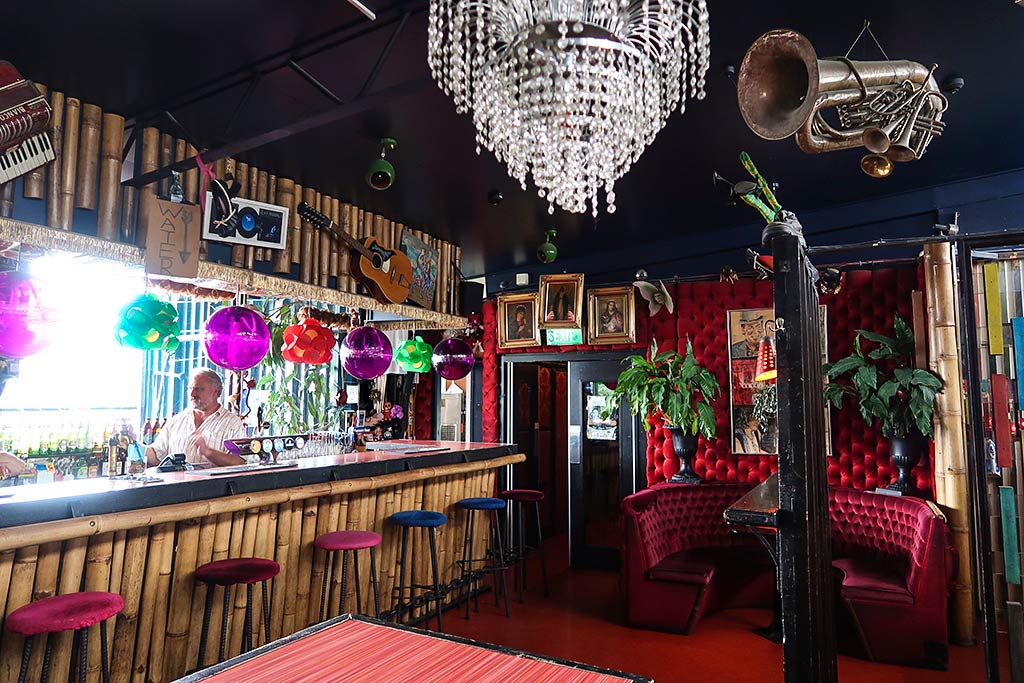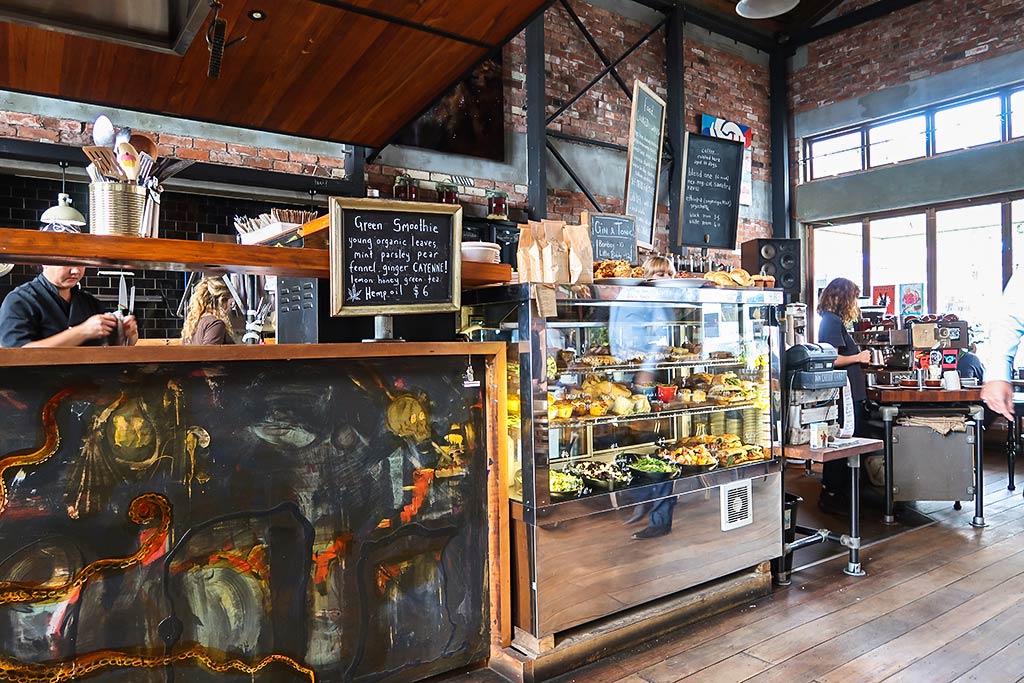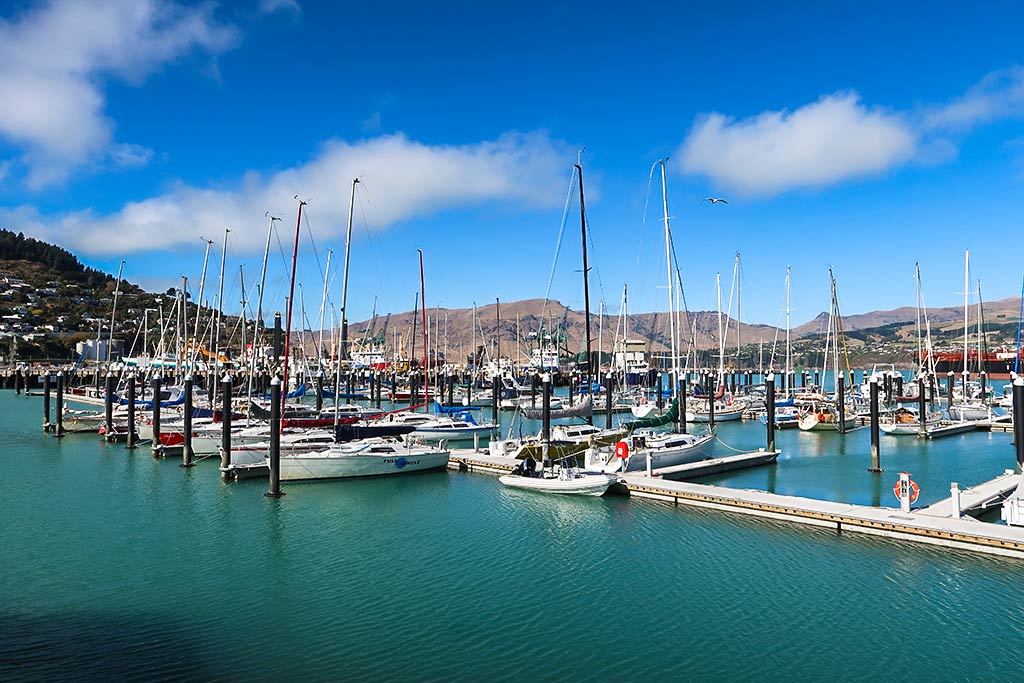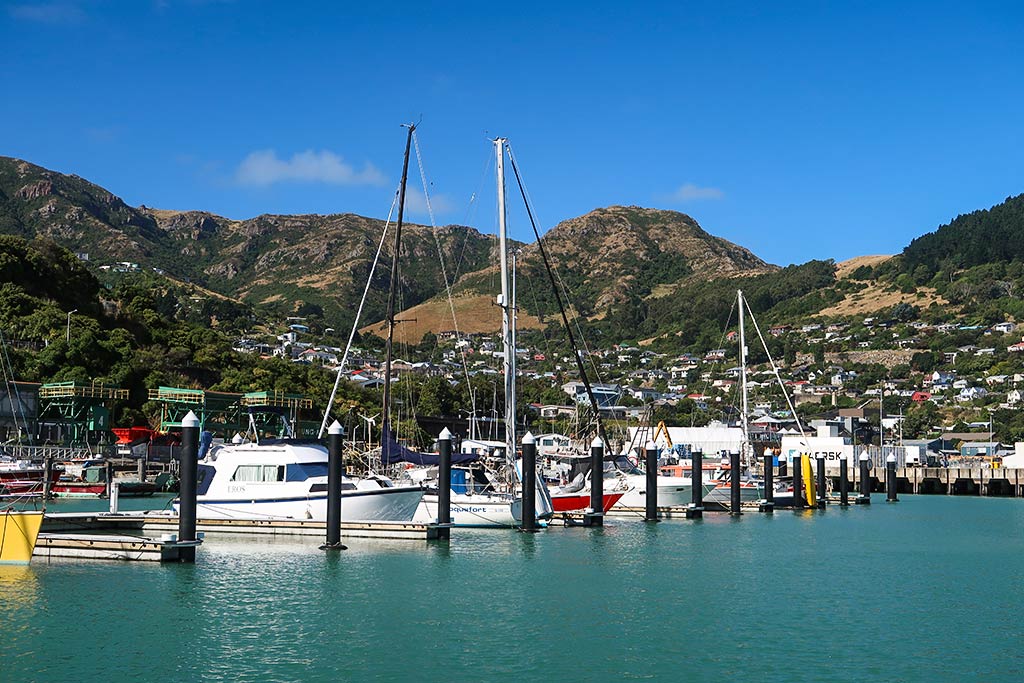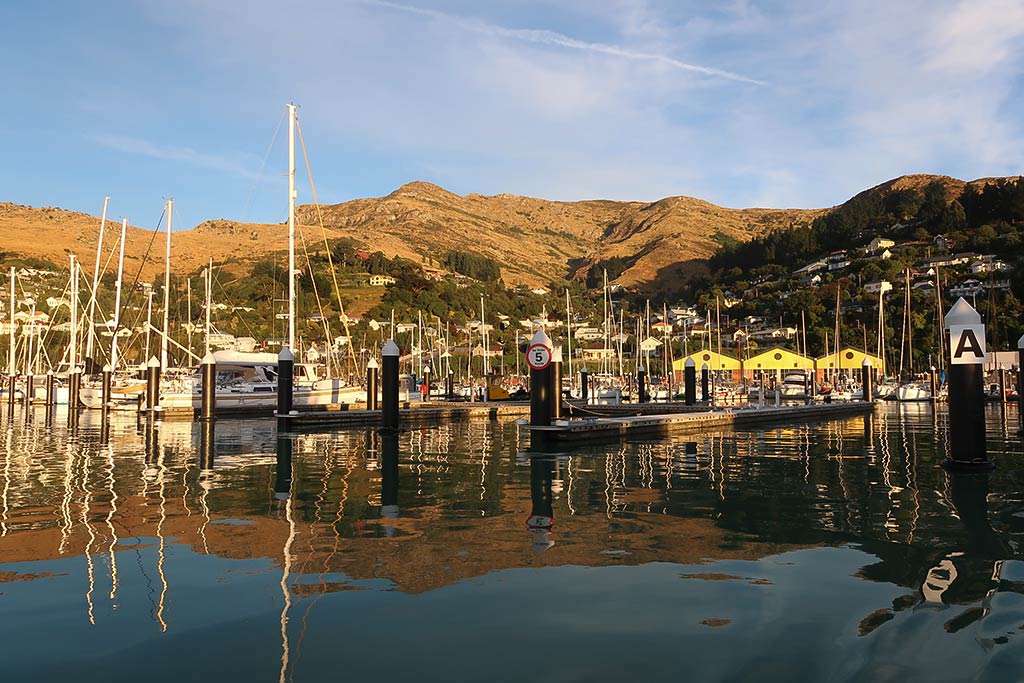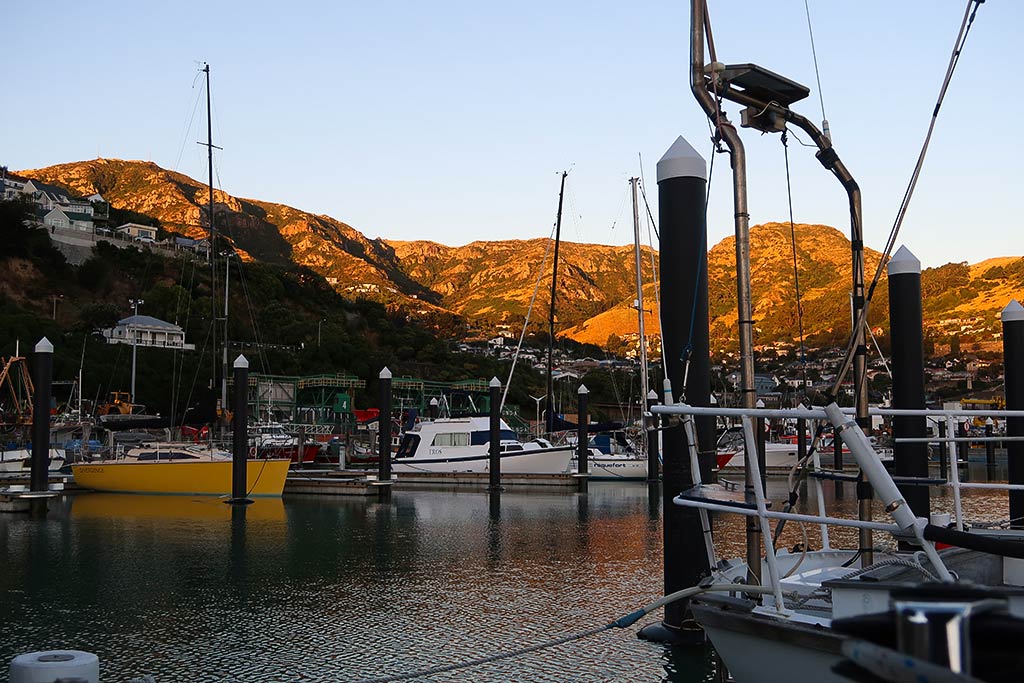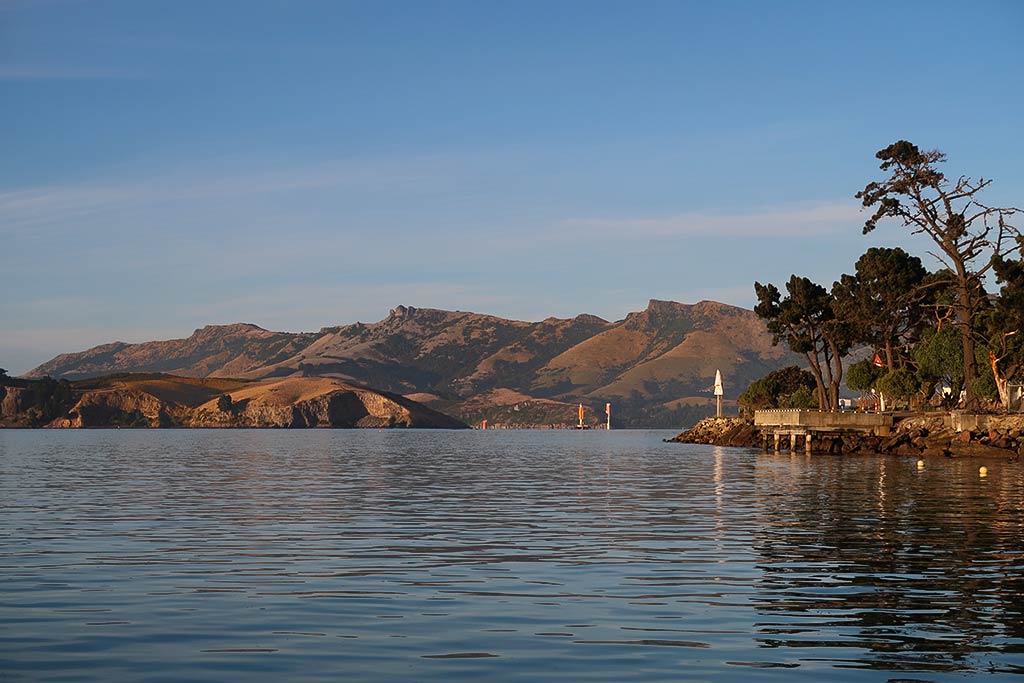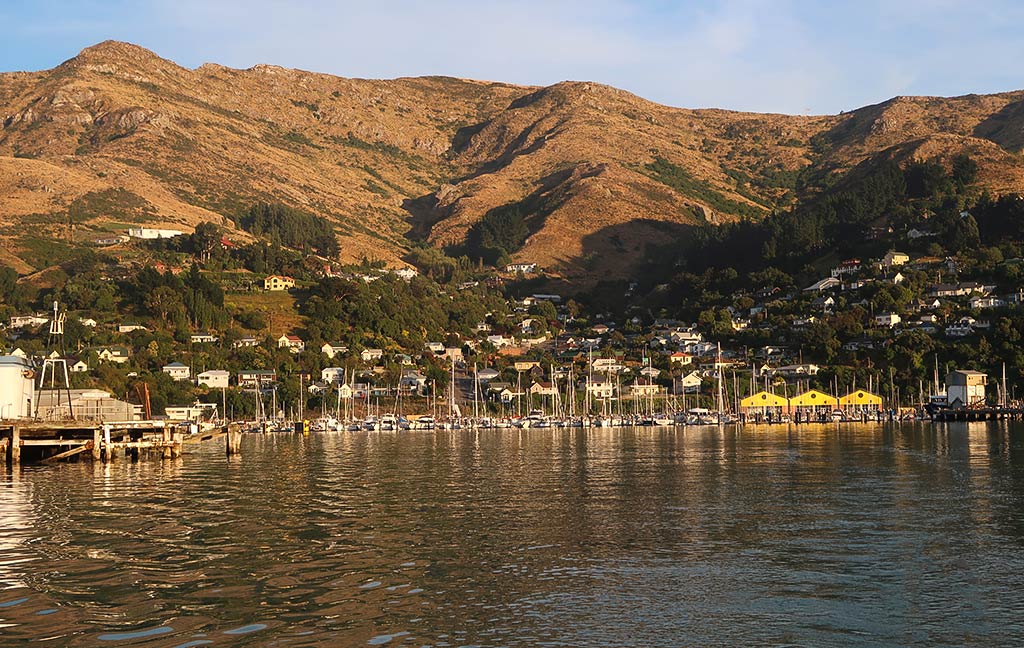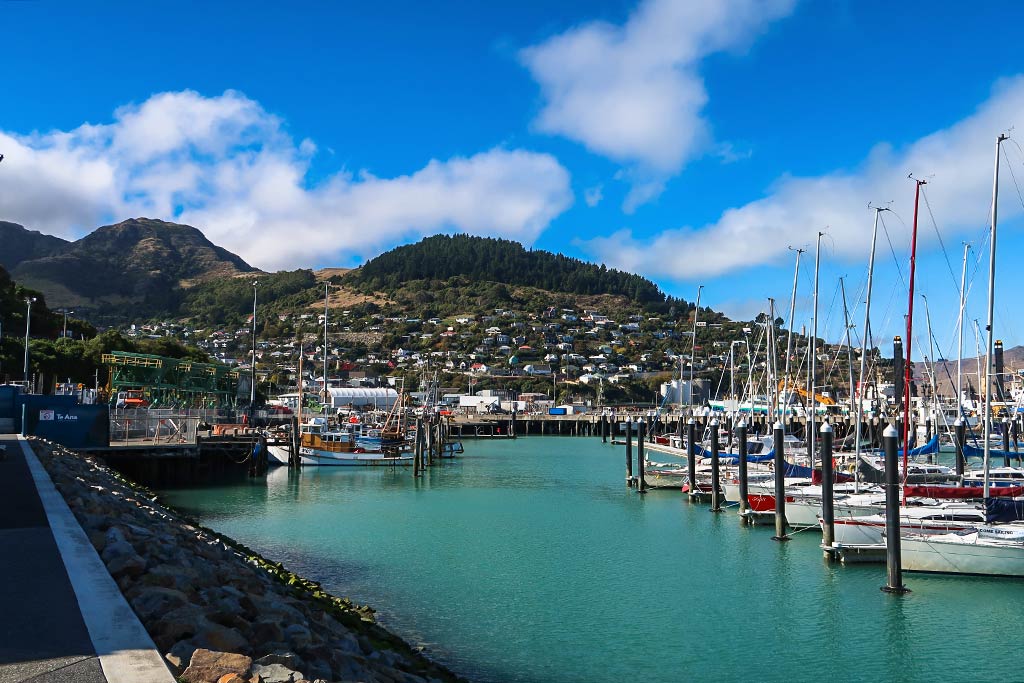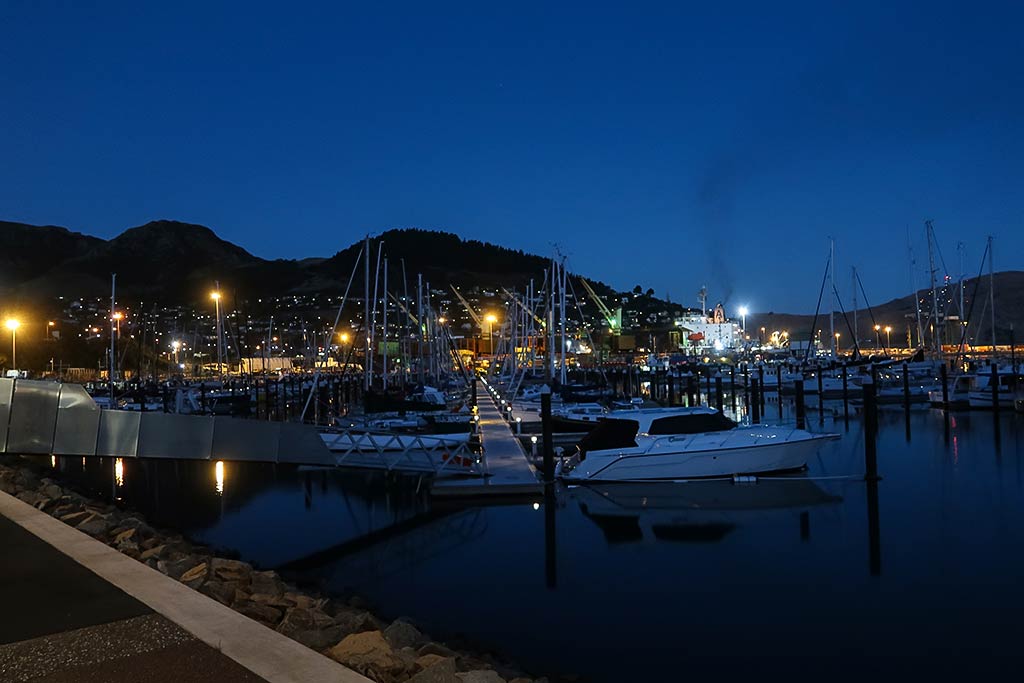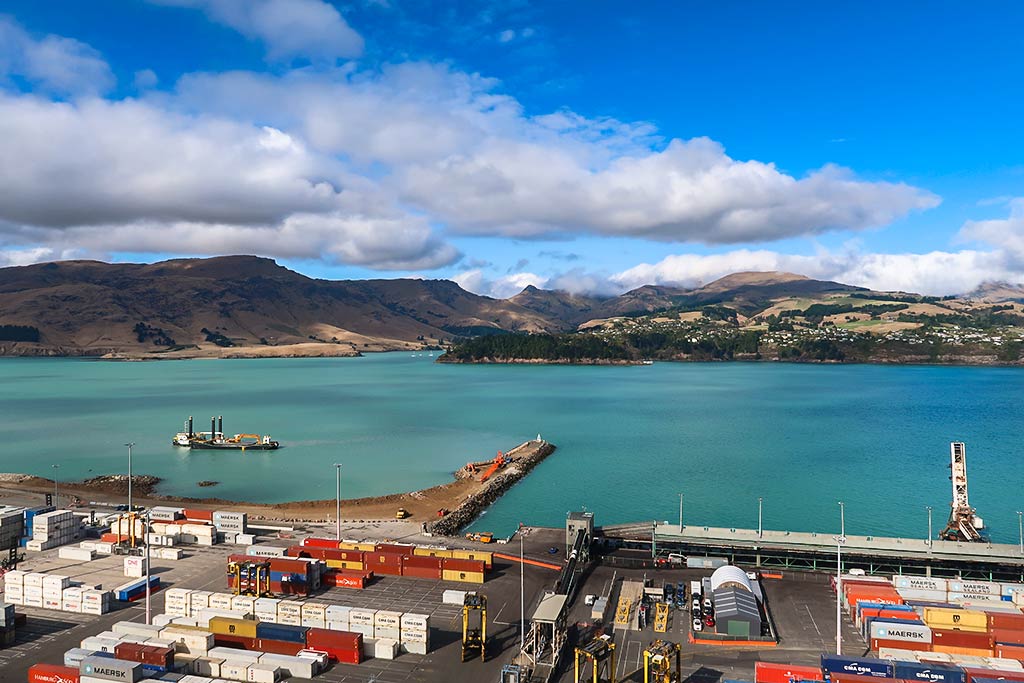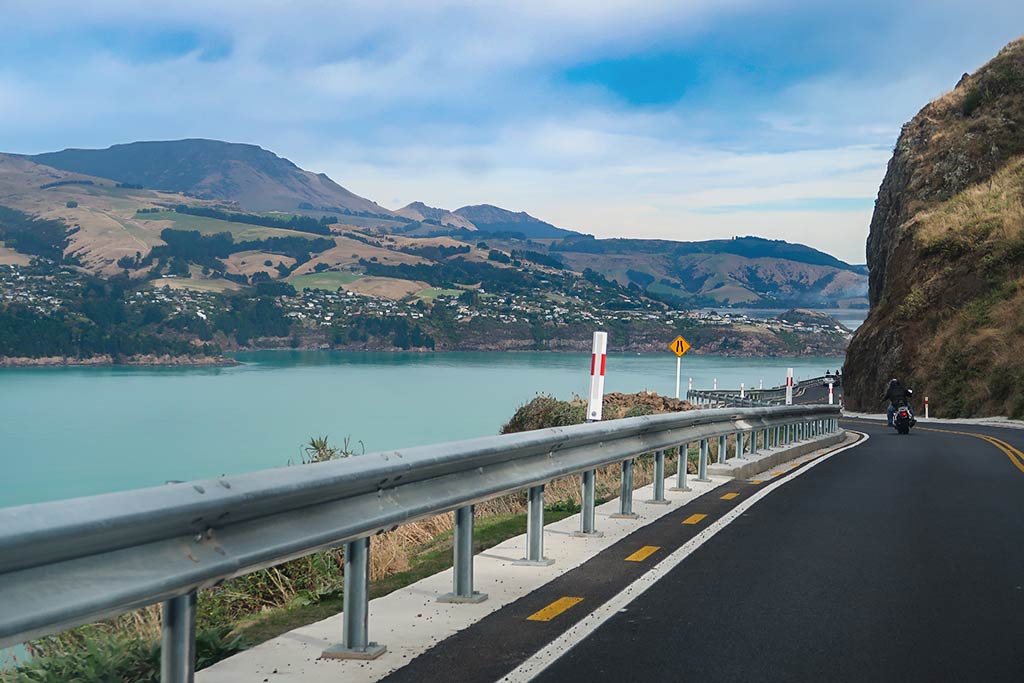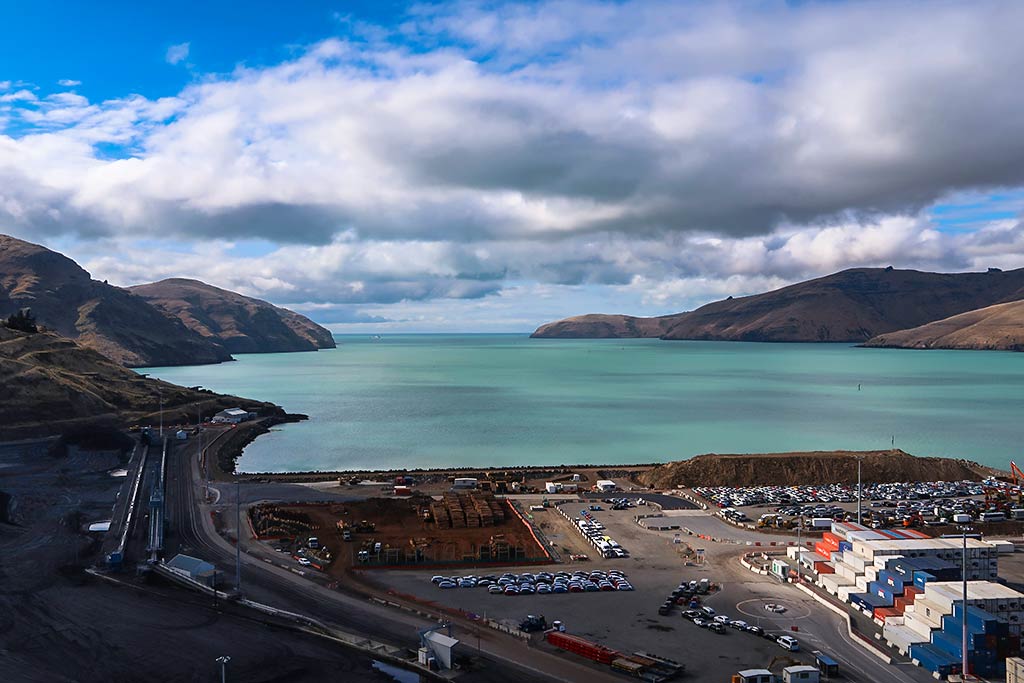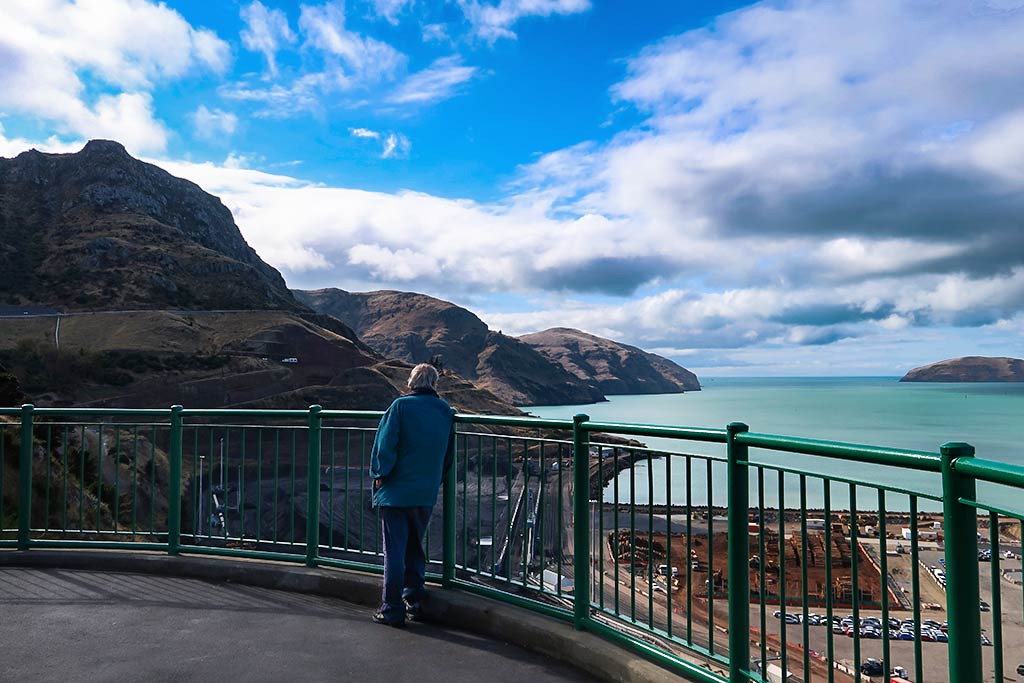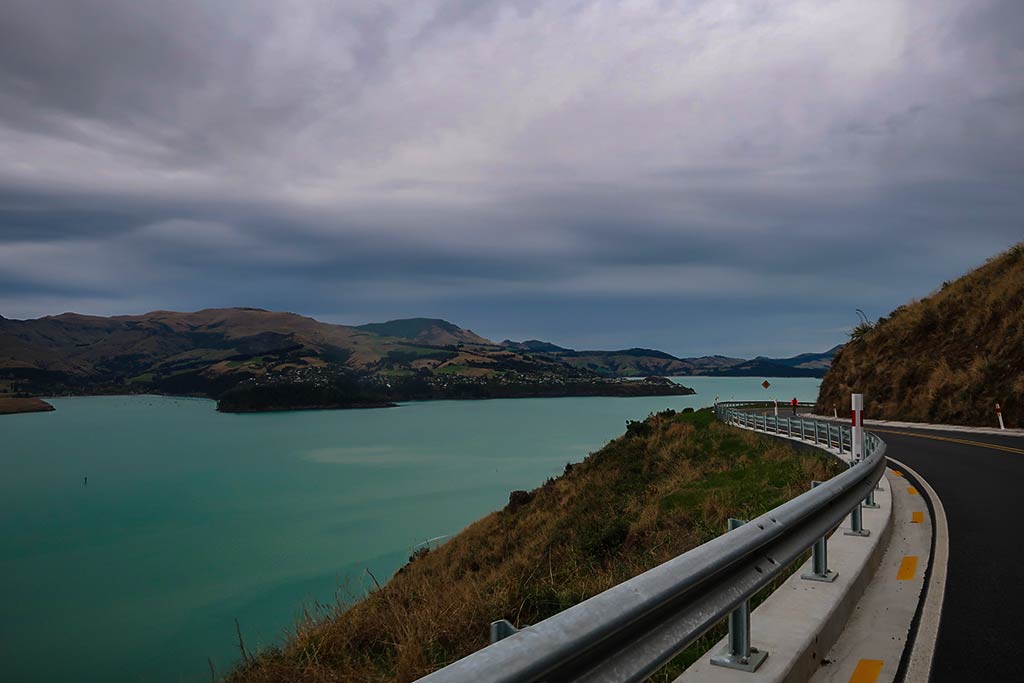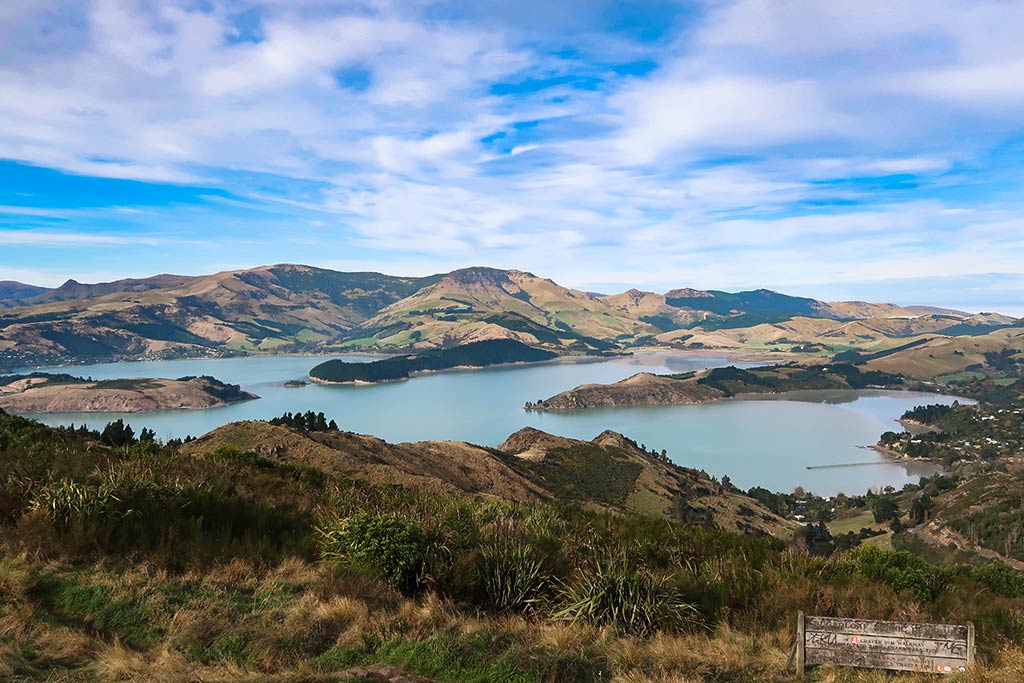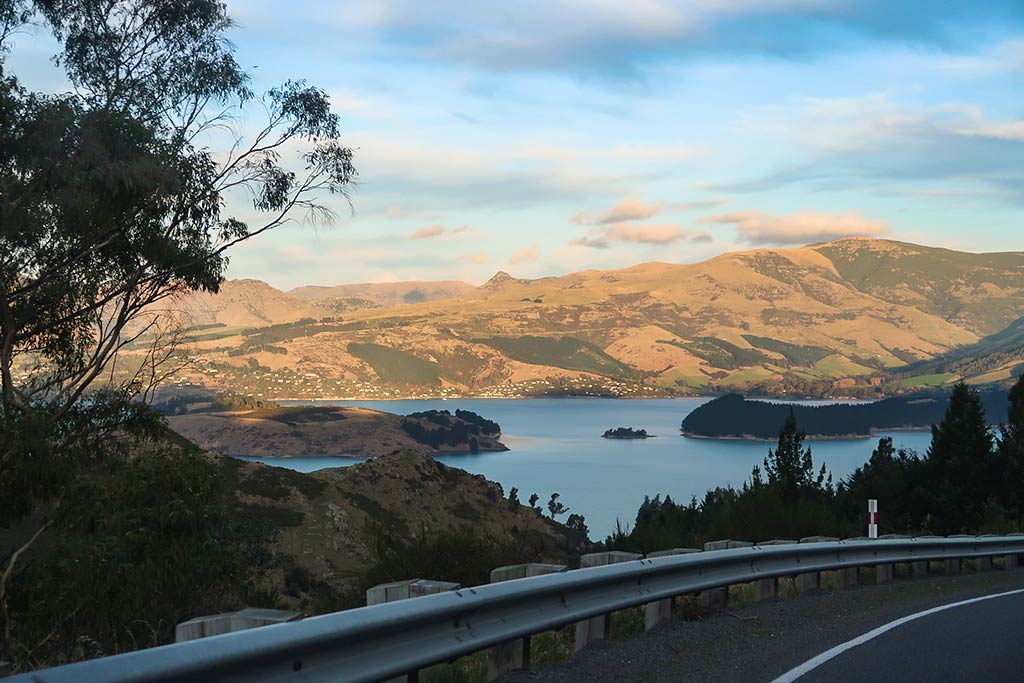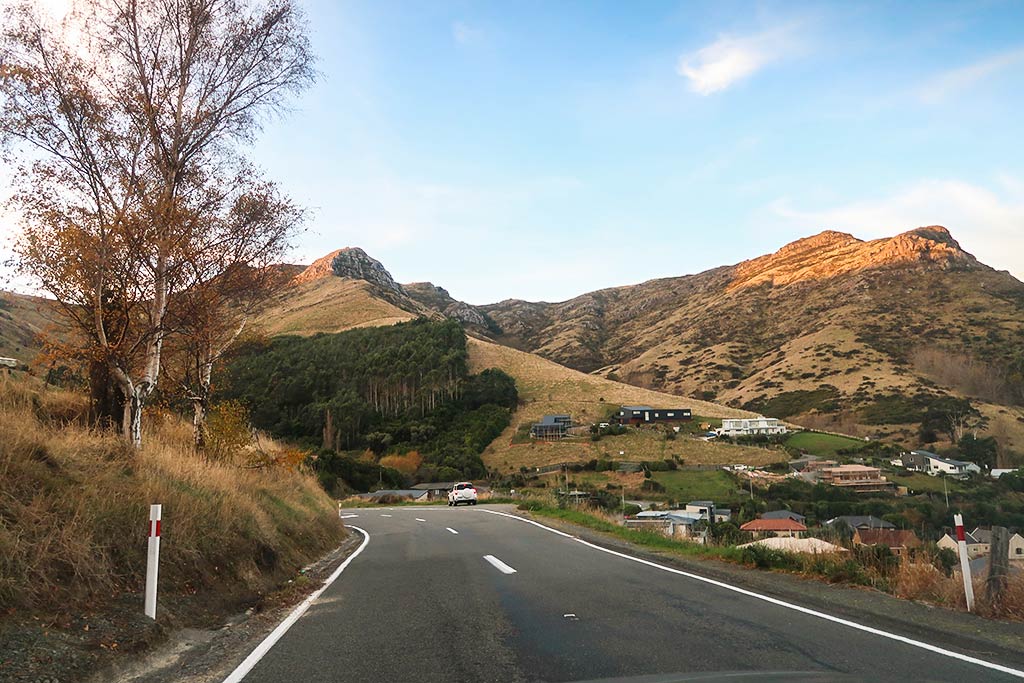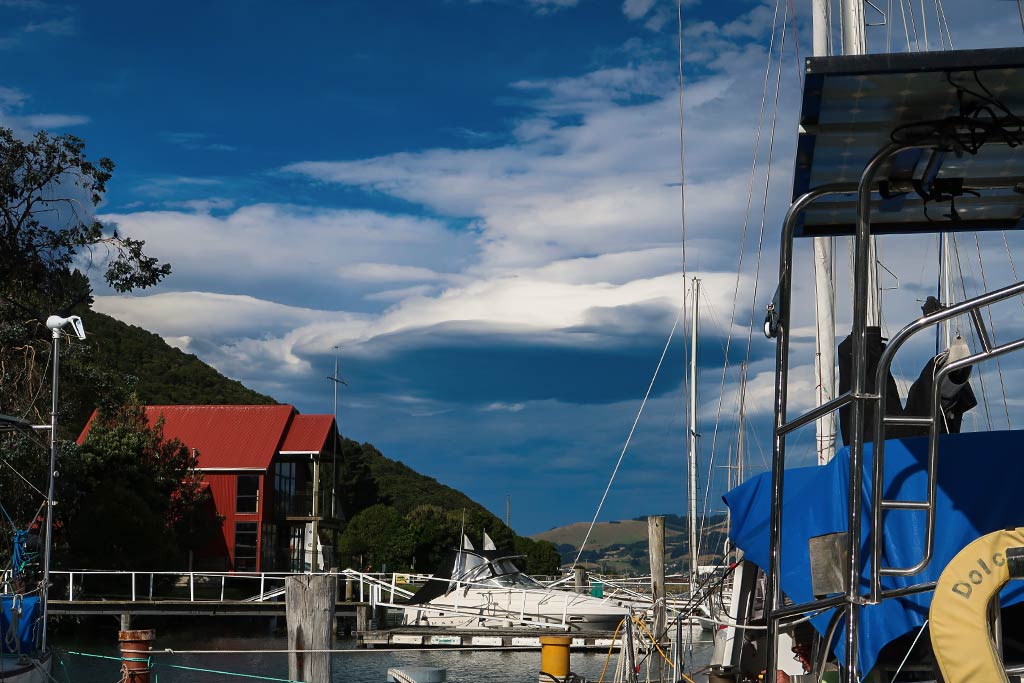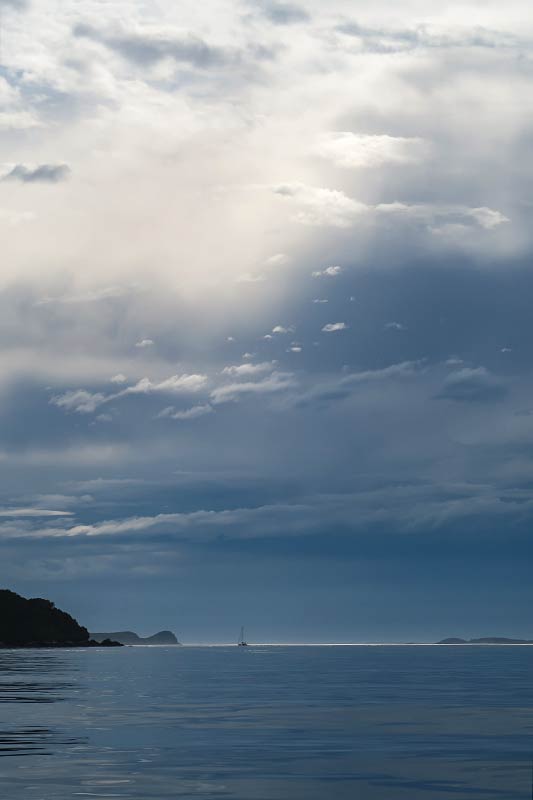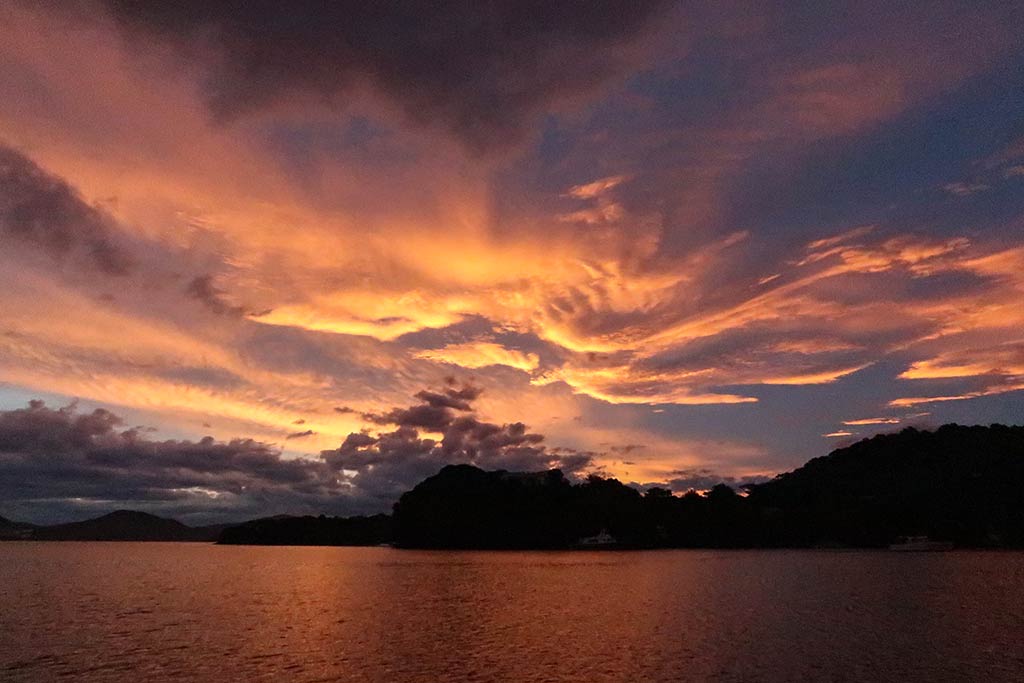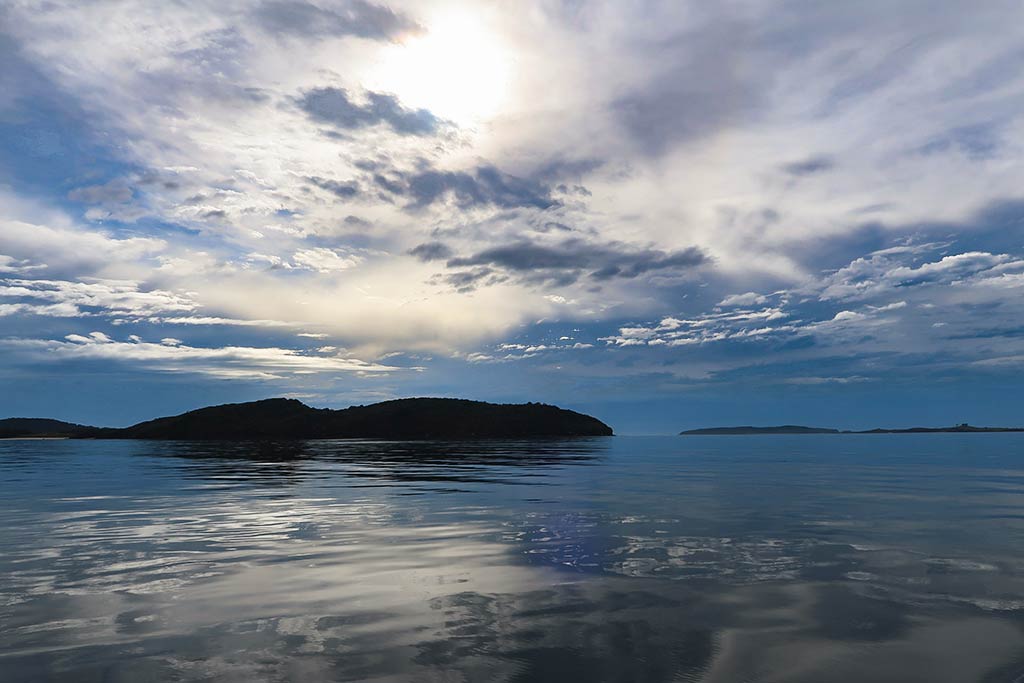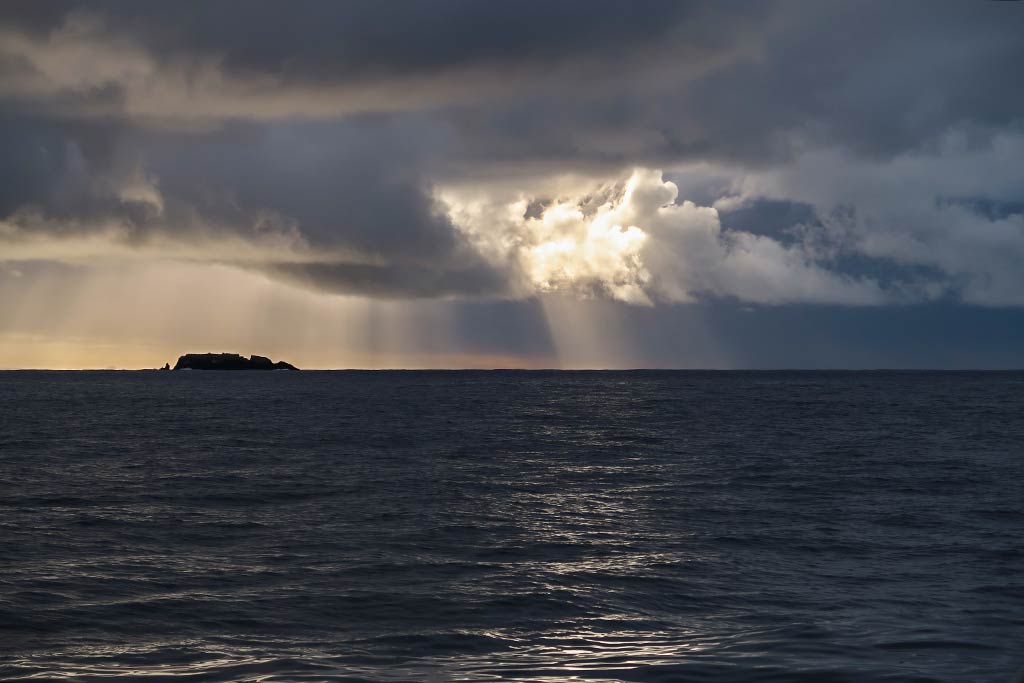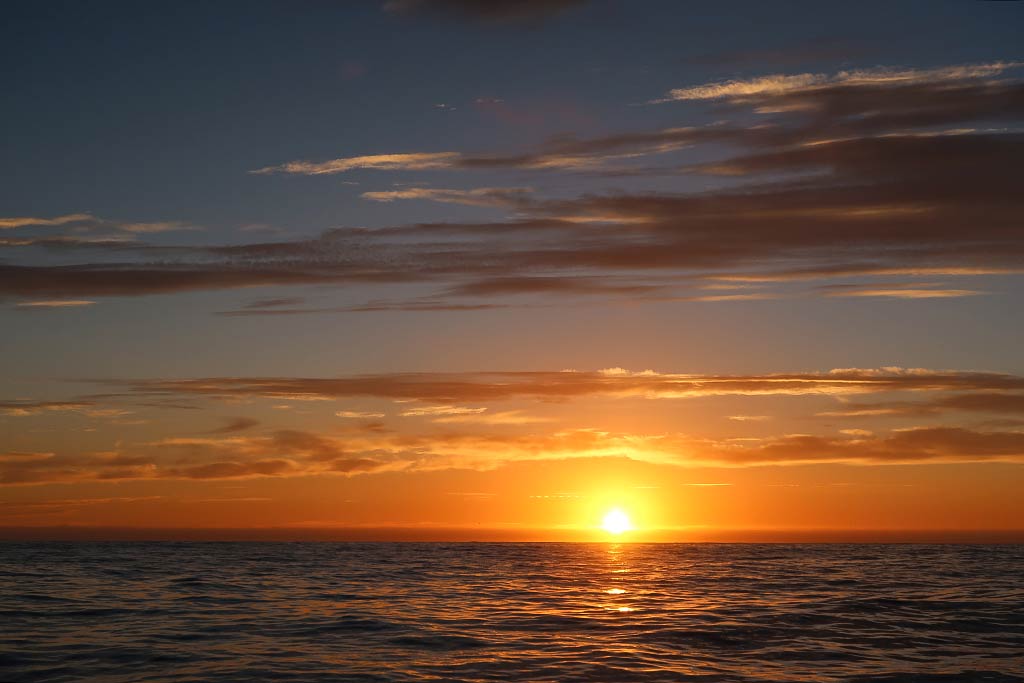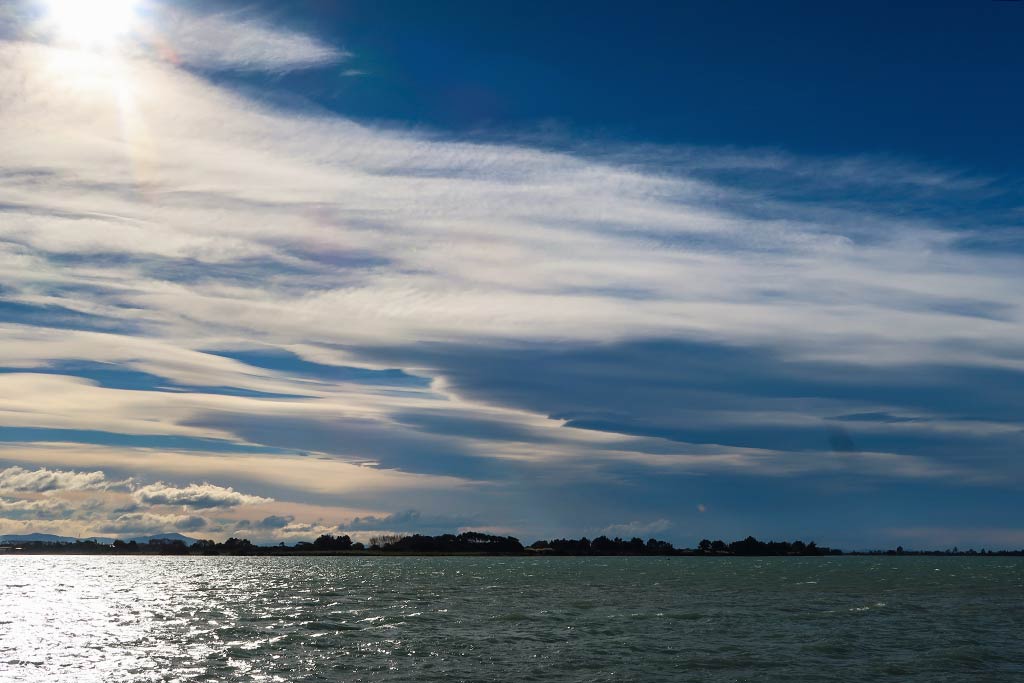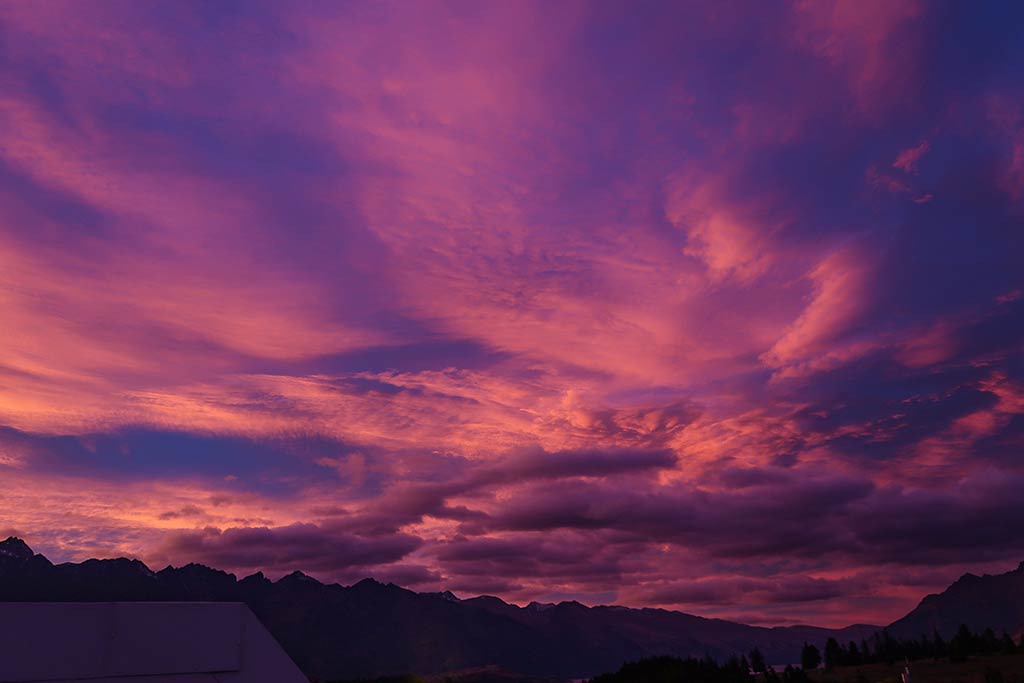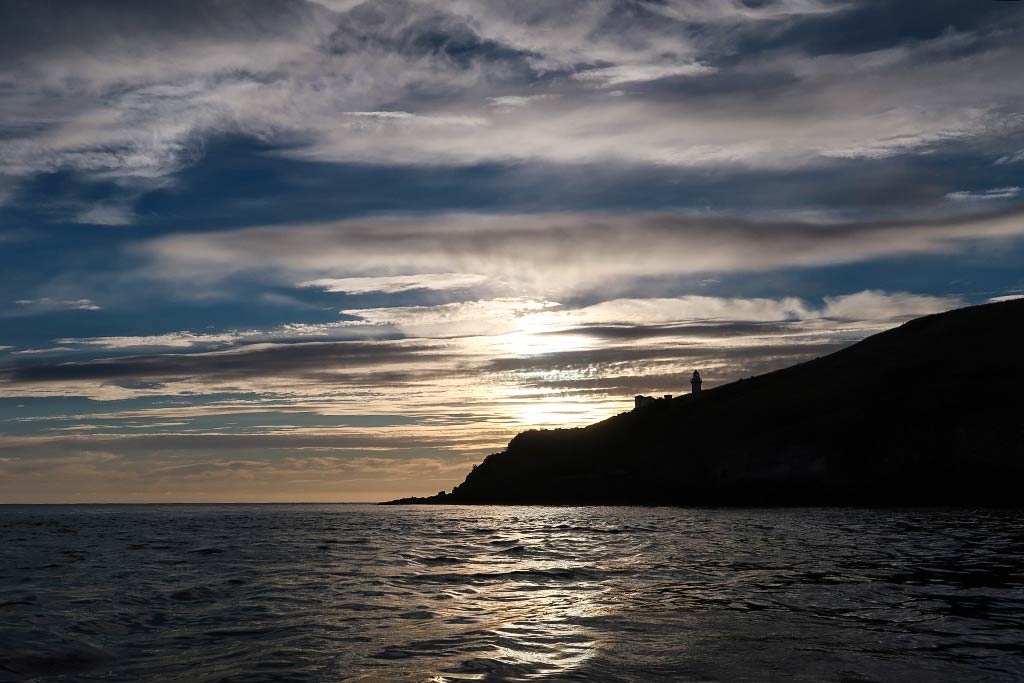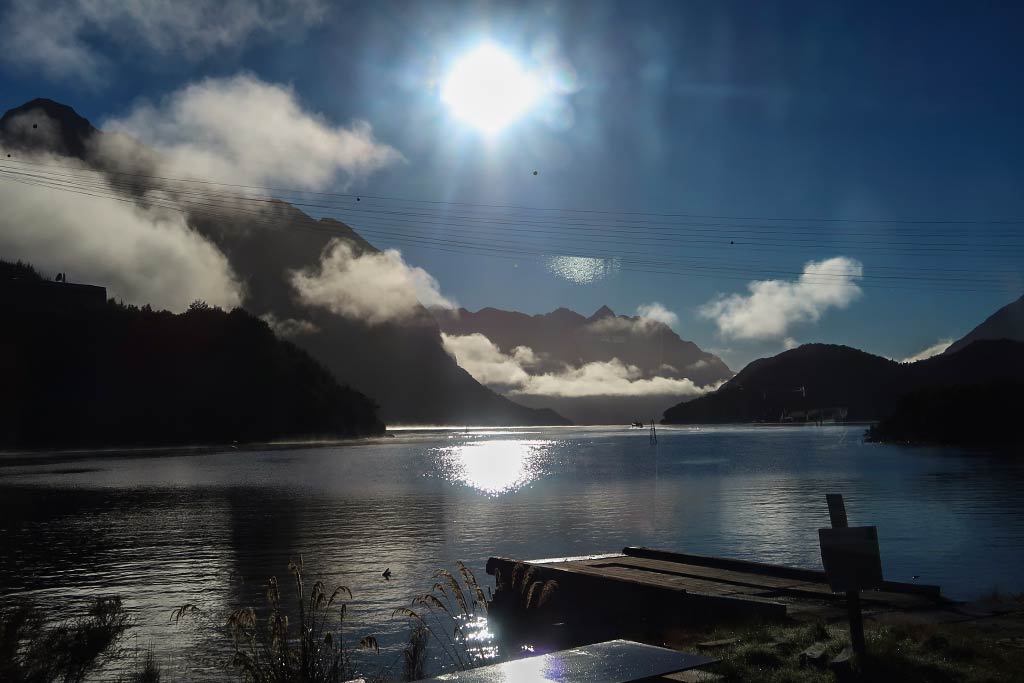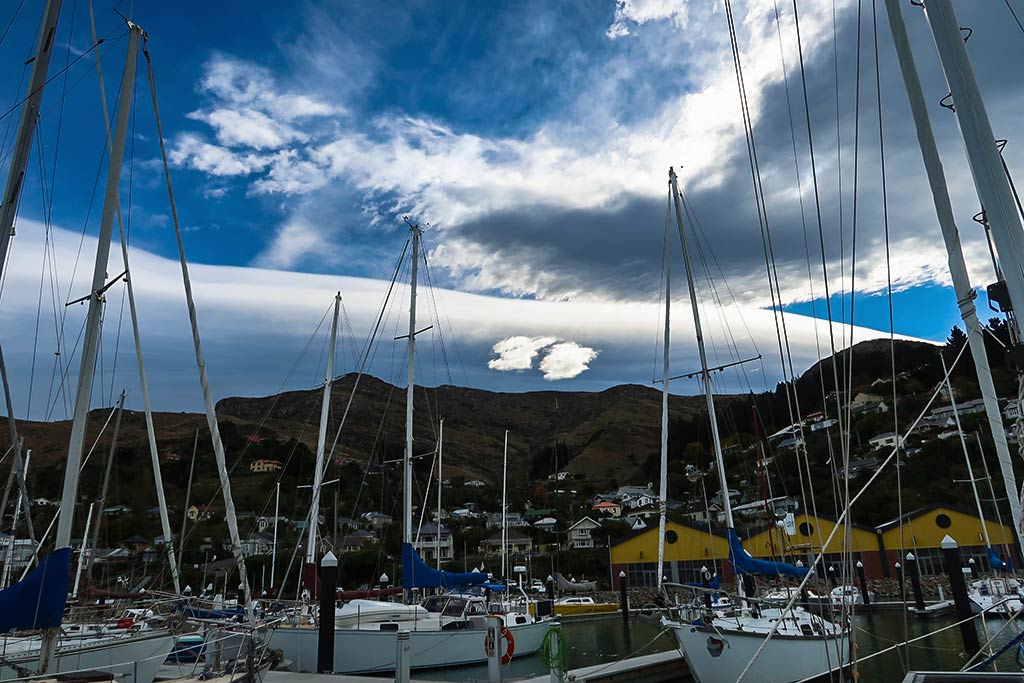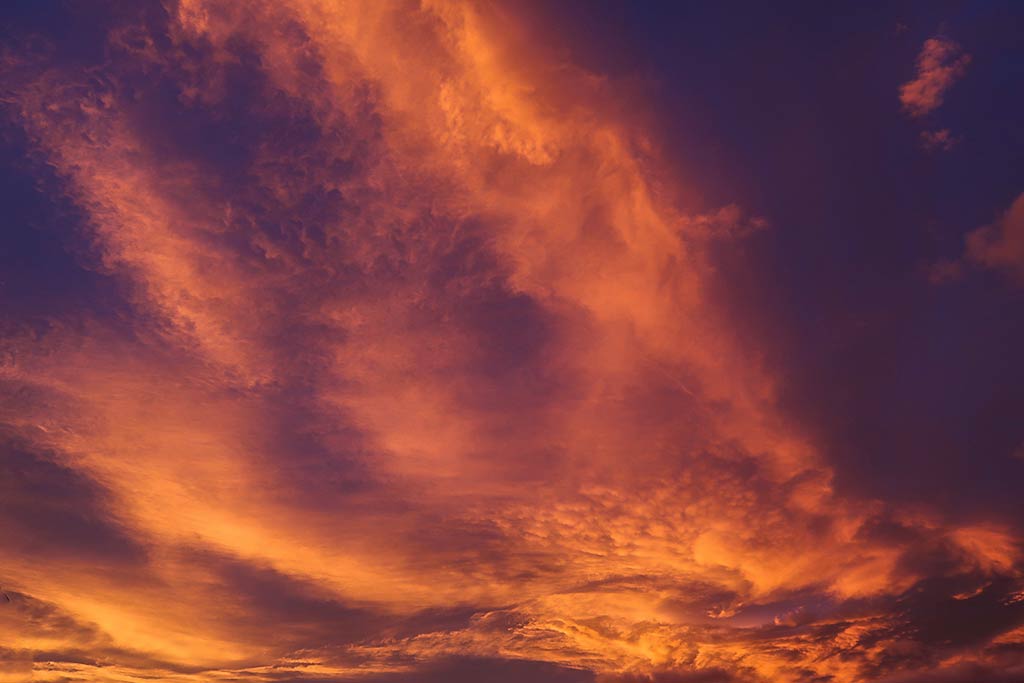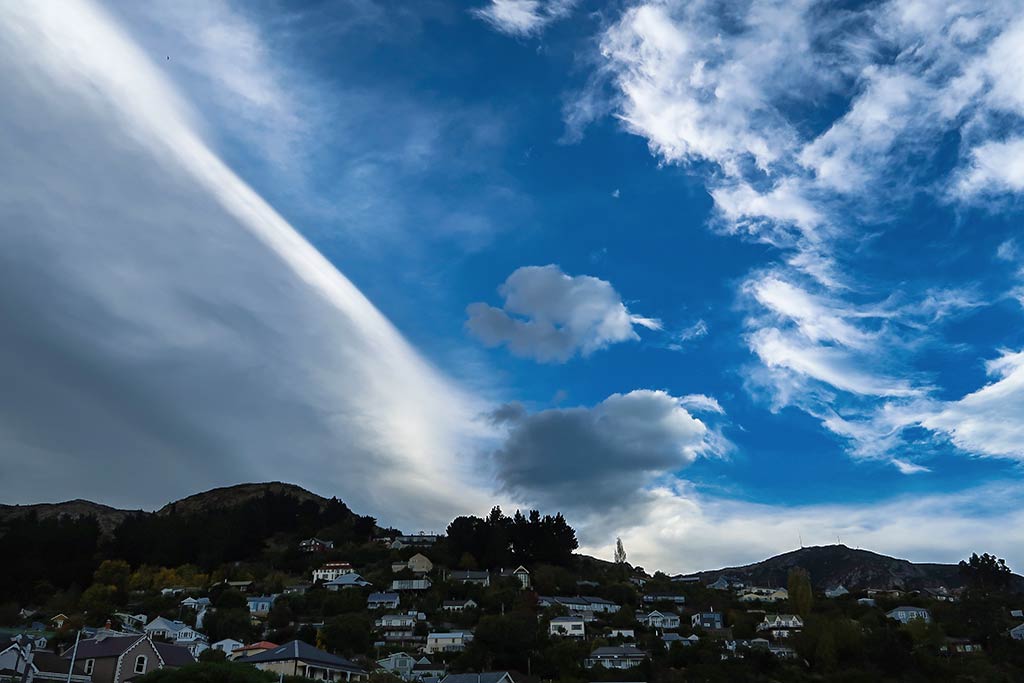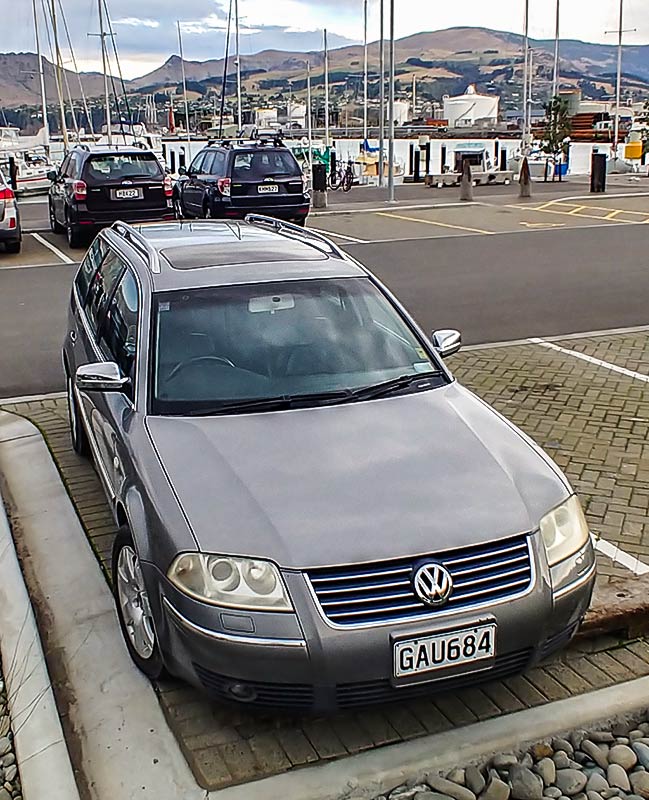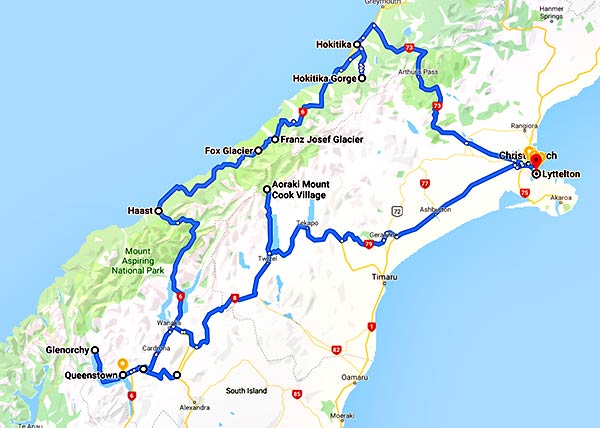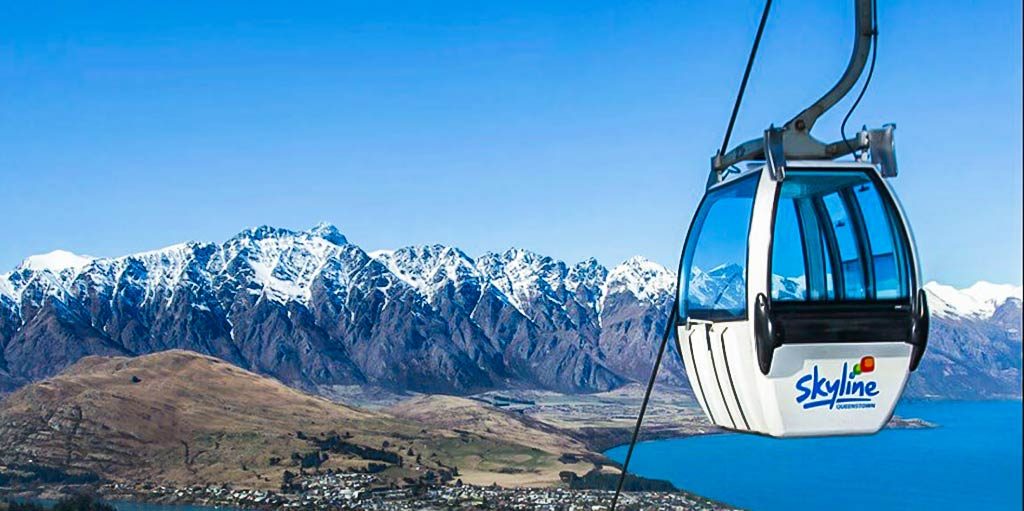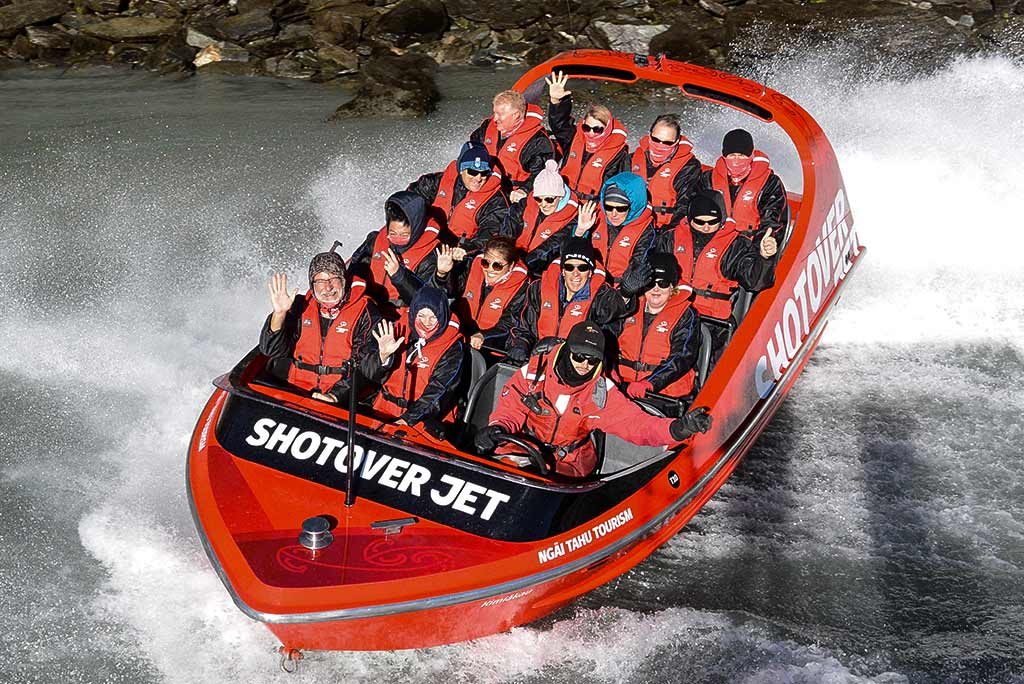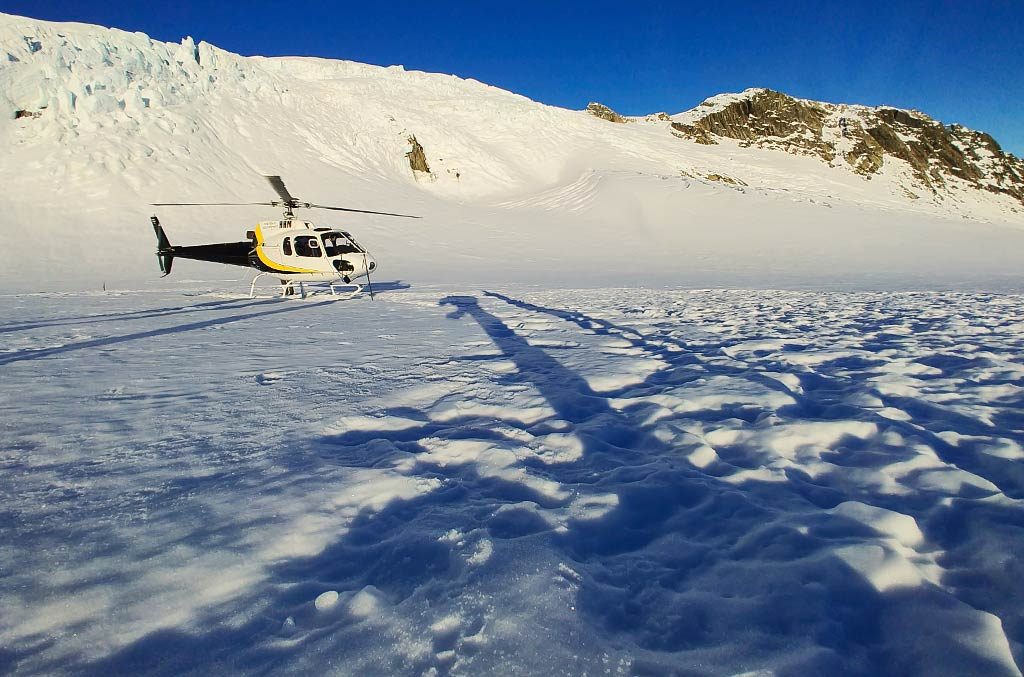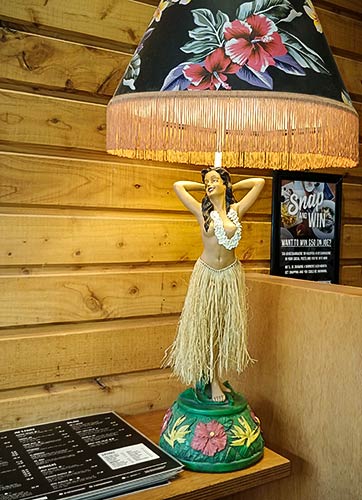May 18, 2019
(This post will kick off a series of rare current posts from Cyndi)
Because we arrived at Te Ana Marina well after dark and stayed put on our boat (Lyttelton Arrival), we didn’t really get to see our surroundings until the next morning. I felt like an excited dog getting let out to run around the park as I climbed off the boat and headed down the dock.
My first impression: Wow! Te Ana Marina is in a very scenic area, much more so than it appeared on Google’s satellite image. What stands out in that image is the shipping port and related businesses that surround the marina and make the area appear rather industrial. The real life view is very different.
The area’s most striking feature is the Port Hills, a mountainous range of hills that are remnants of a huge volcano. Golden grassy at the top, these hills become increasingly green on the lower slopes along which neighborhoods and gardens are scattered. These hills surround and partly encircle both the marina and the nearby town of Lyttelton, both of which sit in what must have once been the volcano’s caldera.
The hilly view continues as we look across the harbor at the huge, golden-grassy Banks Peninsula just south of us. The pier and shipping port, also inside the “caldera,” sit to the east of us, but we can’t see much of it from our slip. Boats and hills make up most of our view. Below, a few photos of the Te Ana Marina (click to enlarge and scroll).
Te Ana Marina has been open less than a year, which means everything’s clean and new, very nice for the boaters. This marina was also designed to entice locals to come and enjoy the waterfront. They’ve succeeded: big expanses of lawn, wide pathways, plentiful parking, attractive landscaping and sculptures, numerous places to sit, and incredibly scenic surroundings are drawing more and more people in all the time. This place just has a certain X-Factor that makes it a very pleasant place to walk around, look at boats, and admire the scenery, plus it’s a great place for kids and dogs to enjoy.
The main building is very nice but not yet filled with businesses. Meanwhile there’s a coffee and burger truck, and the town of Lyttelton (with numerous eateries) is only a 10-minute walk away.
Update: There will be no gym but instead something really exciting. The group that did Little High, a restaurant-quality collection of international eateries laid out food-court style, will open a similar place here in the marina building. Little High is one of our favorite places to eat, the food amazing. I’m sure it will be the same here.
We liked Te Ana right away, and over the time we’ve been here (a visit in February and a second stay starting mid-April) we’ve only grown to appreciate it more. Even after visiting South Island’s most scenic places, I’m still regularly struck by the beauty of Te Ana’s hilly surroundings. I’d say for anyone planning to visit Christchurch, don’t miss the Lyttelton and Te Ana Marina area!
As for the marina itself, we’d highly recommend it to other boaters. The facilities are clean and modern, and the staff, including Matt, the marina manager, and Xanthe (the marina assistant) are terrific. The town of Lyttelton with its grocery store, pharmacy, and numerous eateries is only a 10-minute walk down the street.
For cruisers who want to really see the South Island, Te Ana Marina makes a terrific base from which to travel. Cars are available here for a reasonable price, and once you have your own car, it’s easy to plan numerous road trips during periods of nice weather, a luxury you don’t have when embarking on the month-long, road trip extravaganza most cruisers end up doing from the north island.
As I’ve made pretty obvious, we’re big fans of this marina. After returning from Dunedin, we bought a car and have settled into a nice lifestyle here. The people are friendly and the pace feels easy-going. We drive to the city (Christchurch) nearly every day for lunch and errands, and while the fastest way is through a tunnel, we love taking the newly re-opened Sumner Road which winds up over the hills giving spectacular views of the Banks Peninsula towering over the milky turquoise-aqua water of Lyttelton Harbour.
We also enjoy taking another hilly route called Dyer’s Pass Rd., giving more incredible views of the inner harbor and of Christchurch. These near-daily scenic drives are such a treat. We’ve also come to appreciate the city of Christchurch as it is one of the best food cities we’ve ever visited (more on this in a coming post).
The road to Sumner…
Dyers Pass Road views…
The area’s lovely summer weather lingered well into the fall giving us many warm, sunny days. Increasingly, we’re getting cold days as winter approaches, and the temperature drops fast when the sun goes down so we keep our space heater running. Today we’re riding out one of the season’s first storms, full of wind and rain, which signals winter is around the corner. Since we’re headed back to the US for a spell and won’t be back until spring, we won’t be able to report what it’s like to winter over here, but we’re told it gets pretty cold.
Coming up next, posts about Lyttelton, Christchurch, and Dunedin. I’m planning to have more time to work on the blog once we’re off the boat for awhile. –Cyndi

